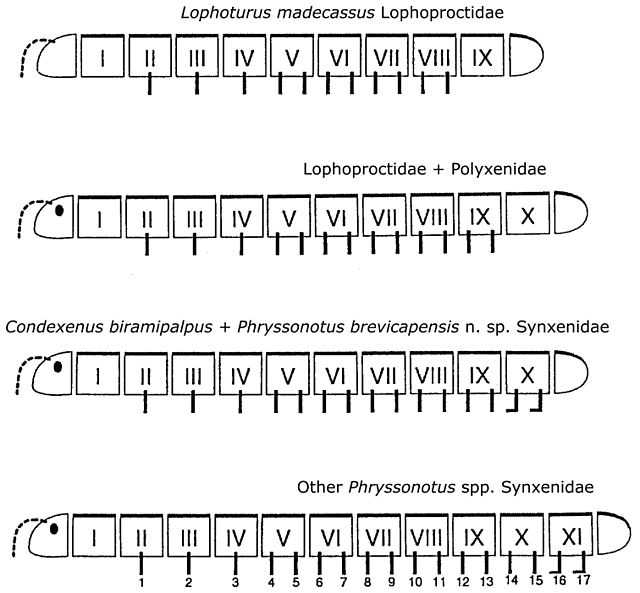Polyxenida is an order of millipedes readily distinguished by a unique body plan consisting of a soft, non-calcified body ornamented with tufts of bristles – traits that have inspired the common names "bristly millipedes" or "pincushion millipedes". There are at least 86 species in four families worldwide, and are the only living members of the subclass Penicillata.
Polyxenida
Segmentation of Polyxenida millipedes. From top to bottom: Lophoturus madecassus Other Lophoproctidae and Polyxenidae Condexenus biramipalpus and Phryssonotus brevicapensis Other Phryssonotus
Phryssonotus brevicapensis (Synxenidae), a species from South Africa described in 2011
Millipedes are a group of arthropods that are characterised by having two pairs of jointed legs on most body segments; they are known scientifically as the class Diplopoda, the name derived from this feature. Each double-legged segment is a result of two single segments fused together. Most millipedes have very elongated cylindrical or flattened bodies with more than 20 segments, while pill millipedes are shorter and can roll into a tight ball. Although the name "millipede" derives from Latin for "thousand feet", no species was known to have 1,000 or more until the discovery in 2020 of Eumillipes persephone, which can have over 1,300 legs. There are approximately 12,000 named species classified into 16 orders and around 140 families, making Diplopoda the largest class of myriapods, an arthropod group which also includes centipedes and other multi-legged creatures.
Millipede
Octoglena sierra (Colobognatha, Polyzoniida)
Anadenobolus monilicornis (Juliformia, Spirobolida)
Harpaphe haydeniana (Polydesmida)







